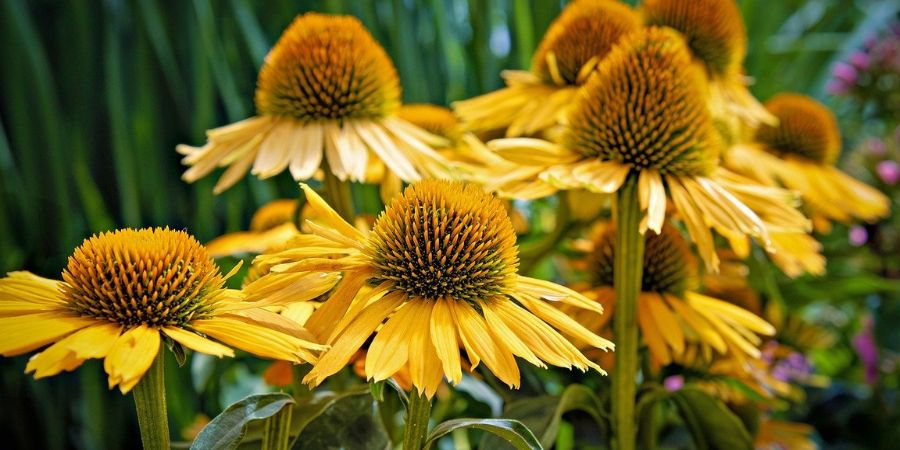Coneflowers, also known as Echinacea, are a garden staple for many compelling reasons. Their hardiness, vibrant colors, and ease of care make them an excellent choice for both novice and experienced gardeners. Here’s why coneflowers should be a top pick for your perennial garden, along with comprehensive care tips.
Varieties and Colors
Coneflowers come in a stunning array of colors and varieties, adding a dynamic palette to any garden. There’s the purple coneflower, which is the classic variety with striking purple petals and a prominent orange-brown center. Other colors include white, red, orange, yellow, green, and magenta.
Winter Hardiness
One of the standout features of coneflowers is their remarkable winter hardiness. They are well-suited to northern state’s cold winters, surviving temperatures well below freezing. This resilience makes them a reliable perennial that will come back year after year, providing consistent beauty and structure to your garden.
Easy to Care For
Coneflowers are low-maintenance plants, making them an excellent choice for busy gardeners. Here’s how to ensure they thrive in your garden:
Planting
Location: Choose a sunny spot as coneflowers prefer full sun, though they can tolerate partial shade.
Soil: Plant in well-draining soil. They are adaptable to a range of soil types but thrive best in slightly acidic to neutral pH.
Spacing: Space plants about 18 to 24 inches apart to ensure good air circulation.
Watering
Initial Growth: Water regularly during the first growing season to establish a deep, extensive root system.
Established Plants: Once established, coneflowers are drought-tolerant. Water deeply but infrequently, allowing the soil to dry out between waterings.
Visit Applewood Nursery & Landscape Supply, Your One-Stop Landscape Shop!
Fertilizing
Minimal Needs: Coneflowers are not heavy feeders. A light application of compost in the spring is usually sufficient.
Avoid Over-fertilizing: Too much fertilizer can lead to weak, leggy growth and fewer flowers.
Mulching
Moisture Retention: Apply a layer of mulch around the base of the plants to help retain moisture and suppress weeds.
Winter Protection: Mulching in late fall helps protect the roots from winter cold.
Pest Control and Disease Management
Coneflowers are relatively pest-resistant, but some issues can still arise:
Pests
Aphids: Small, sap-sucking insects that can be controlled with insecticidal soap or by encouraging natural predators like ladybugs.
Japanese Beetles: Handpick these beetles off leaves and drown them in soapy water or use neem oil to deter them.
Leafhoppers: These can spread aster yellows, a disease that affects coneflowers. Remove and destroy infected plants promptly (the whole plant).
Diseases
Powdery Mildew: Ensure good air circulation and avoid overhead watering to prevent this fungal disease.
Aster Yellows: This disease causes deformed flowers and yellowing foliage. There is no cure, so affected plants should be removed immediately (the whole plant).
Root Rot: Prevent by ensuring well-draining soil and avoiding over-watering.
Benefits of Coneflowers
Beyond their beauty and ease of care, coneflowers offer several other benefits:
Attract Pollinators: Bees, butterflies, and other pollinators are drawn to coneflowers, helping to support your garden’s ecosystem.
Medicinal Properties: Echinacea is known for its immune-boosting properties and has been used in traditional medicine.
Cut Flowers: Their sturdy stems and long-lasting blooms make coneflowers excellent for cut flower arrangements.
Coneflowers are a versatile and resilient choice for Minnesota gardens. With their vibrant colors, winter hardiness, and minimal care requirements, they are sure to enhance any landscape. Whether you’re looking to create a colorful garden display or provide a habitat for pollinators, coneflowers are a perennial favorite that will deliver year after year. Visit Applewood Nursery & Landscape Supply to explore our wide selection of coneflower varieties and get expert advice on growing these beautiful plants in your garden.

